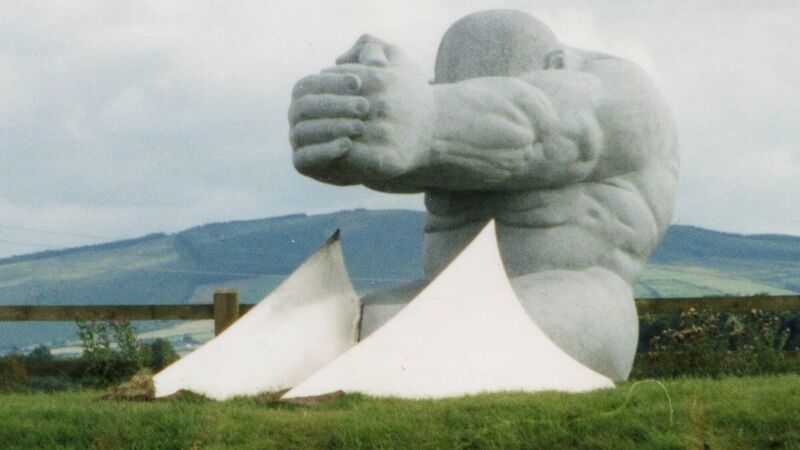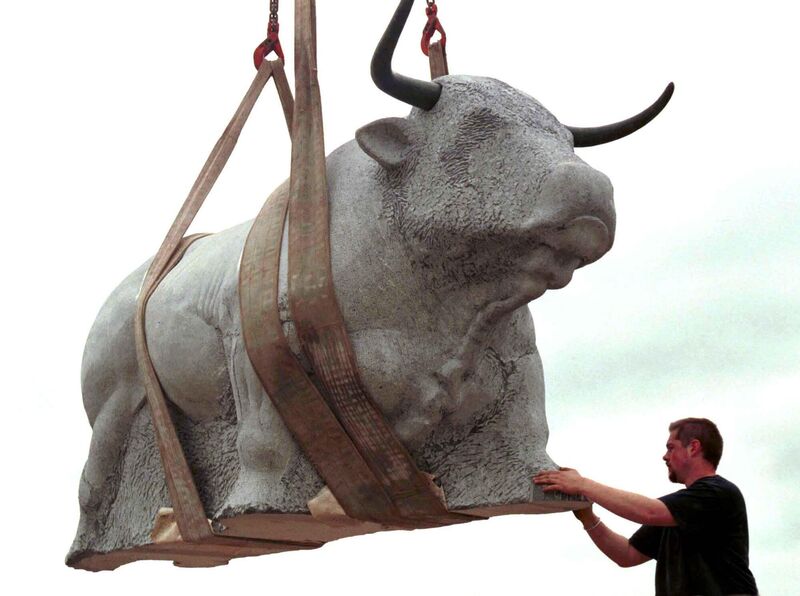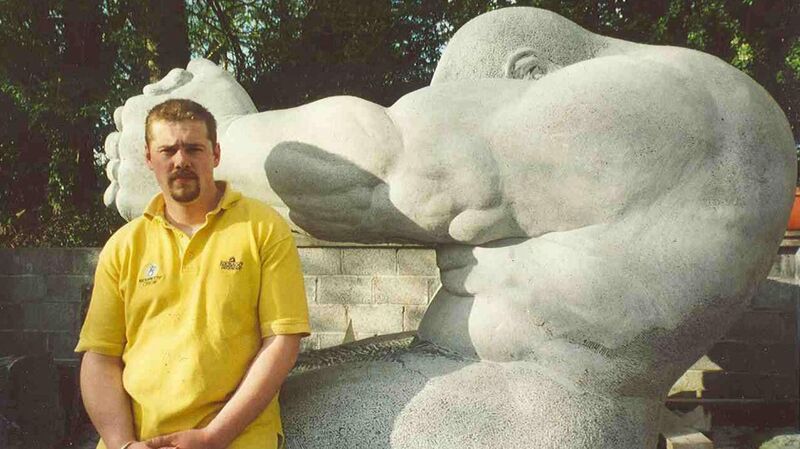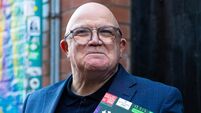Munster In 30 Artworks, No 12: Architects of the Land, by Colin Grehan, Co Tipperary

Architects of the Land, by Colin Grehan, near Nenagh, Co Tipperary.
Colin Grehan admits he didn’t quite realise what he was taking on when he won the commission for a public sculpture at the Nenagh Bypass in Co Tipperary in 1999. Having grown up in Templemore, just half an hour away, he knew the area well, and his proposal was for two limestone figures - a ploughman and a bull - one on each side of the road.
“Originally, there was a second artist involved,” he says. “Richard O’Meara, who had taught me sculpture at Limerick School of Art, was supposed to be doing it with me. But then Richard dropped out, saying he had too much else on as it was. Looking back, I wonder if he did it strategically, to give me a kick up the backside and get me making work on my own.”
The project was funded to the tune of £40,000 under the Per Cent for Art Scheme, which provides for a portion of the budget for public works is set aside for an arts commission. There were 16 submissions, and Grehan never imagined his, a project he called Architects of the Land, would even be shortlisted, let alone win out over the rest.

“I was maybe twenty-seven years old at the time,” he says. “I don’t think I’d ever even heard of the Per Cent for Art Scheme before Richard brought it up.”
When he won the commission, Grehan ordered two blocks of stone from McKeon’s at Threecastles Quarry in Kilkenny; one weighed seven tonnes, the other 17. “I’d converted a barn on my father’s property into a studio. I couldn’t believe how big the stones were the first time I walked around them. The smaller one looked manageable, but the other one was huge. It was very daunting.”
He set to work, blocking out the shapes of the bull and the ploughman with a stone saw before switching to pneumatic tools, and then to hand tools as the project neared completion. It took him 16 months of hard graft, chipping away at least 11 tonnes of stone, before he was any way happy with the results. To complete the pieces, he wrapped the bull’s horns in bronze, and set the ploughman’s legs in stainless steel, to represent the ploughshares.
“I didn’t follow the original brief very closely,” he says. “I imposed an idea of my own. My mother’s family were farmers, and I’d been thinking a lot about the agrarian history of north Tipperary. There was that cataclysmic change, when people went from being hunter/gatherers to settling down on the land, growing crops and domesticating animals. They would have started paying attention to the changing of the seasons, and the climate, in a way that they might not have done before.
“There was also that whole notion of land ownership. That was something new as well, and it must have been a profound idea for them to get to grips with.”
Grehan didn’t model his sculpture of the ploughman on anyone in particular; the figure is, he says, more of an archetype than anything. “There were ploughmen in north Tipperary for hundreds of years. Up to the 1960s and 70s, and maybe even later, they would still have been a familiar sight in the landscape.”
The figure of the bull has more mythological connotations. “It’s inevitable, really. Bulls and cows are part and parcel of our folklore. It’s no different in this part of the country than anywhere else; wherever you go, there’d be stories of magical cows and cattle raids and the like.”

Grehan oversaw the installation – by crane - of Architects of the Land on 30th June 2001. “I always wanted to create a landmark sculpture,” he says. “And that’s what it’s become. Anyone passing on the Nenagh N7 will know the piece.”
The following year, Grehan was commissioned to produce a similar sculpture for the market square in Navan, Co Meath. His proposal was for a 1.6 metre tall bull being restrained by two bare-chested men, in reference to the cattle fairs that were once held regularly in the town. To his shock, the project met with massive opposition, and the formation of an Anti-Bull Alliance Party.
“That sculpture was awfully controversial,” he says. “To be honest, I worked on at least twelve designs, and they chose the one I was least happy with.”
The main objection, however, was not to the work itself, but to its proposed location at a crossroads, which would ensure that the front of the bull could only be seen from the main road. Grehan completed the piece in 2004, but it then sat in storage for seven years before Navan town council pressed ahead with its installation in March 2011. Defying its critics, the Bull of Navan has since, like Architects of the Land, become a landmark.
These times, Grehan lives near the village of Monivea in Co Galway. He continues carving stone, often to commission, and has worked as an educator, teaching art in prisons.
“I’m on sabbatical from that at the moment,” he says. “I’m doing work instead for the Four Courts in Dublin, carving Corinthian capitals for the top of the dome. They were badly damaged when the Four Courts was bombed in 1922, and the repairs they made at the time were pretty poor. I hope to make a better job of them.”
Grehan is not, he admits, the most practical when it comes to marketing his talents. He has no website, and no time for social media, preferring to simply get on with the work and see where it takes him. “Thomas Edison was once asked where his inspiration came from, and he said, ‘inspiration wears overalls.’ I’m inclined to agree with that. Other artists promote themselves endlessly; I’d be the guy covered in dust at the back of the workshop.”



